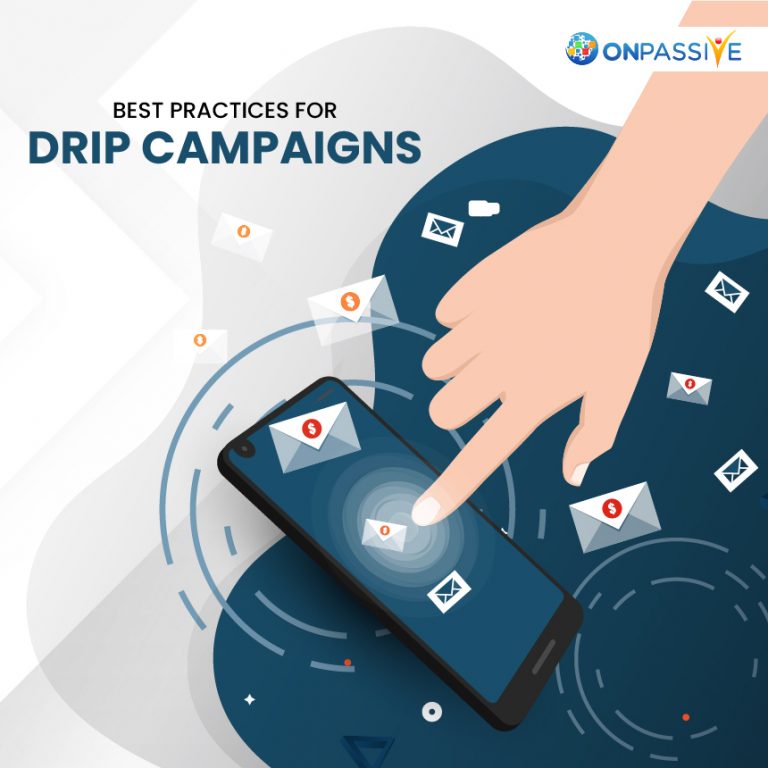
Converting your prospects into customers generally requires multiple contacts with them. But determining the right time to connect with every prospect several times is a daunting task. Many marketers find ‘Drip Email Marketing Campaign’ an efficient, powerful, and cost-effective tool for reaching out and converting prospects into customers to face this challenge effectively.
What Is a ‘Drip’ Campaign?
A drip campaign or automated email marketing involves setting up a series of email messages sent at regularly timed intervals in response to a trigger. To run a drip campaign, you need autoresponder software (typically web-based) that can automatically send emails based on the business rules you establish.
Your email messages start dripping into prospects’ mailbox after signing up for your email newsletter or white paper. You can set up a calendar to push an email once a week or once a fortnight.
Here we share five practical tips for getting the most out of your automated drip email marketing campaigns.
Goals and Segments
Start by setting the goal and the target segment to achieve it. Here are a few examples:
- Goal: Encourage prospects to make their first purchase. Segment: Anyone who has not purchased your products or services yet.
- Goal: Upsell existing customers. Segment: Customers who have spent less than an expected or standard amount in a given timeframe.
- Goal: Attract old customers. Segment: Anyone who had purchased earlier but not an active customer now.
- Goal: Sell a particular product. Segment: A person who has not purchased the product yet has visited its page in a specific timeframe.
The more specific you get with purchase behavior, shopper type, and timeline, the higher ROI you get on your drip campaign. It is wise to have multiple drip marketing campaigns for each segment.
Frequency
How often should you send drip emails to your target audiences? There is no correct answer. Use A/B testing at various times. Start with two schedules – the 1st email, 2nd, 3rd, and so on. Whichever overall campaign performs better (always measured against your goal) is the frequency to go with. In drip marketing, time and day of the week matter. Use the high-traffic times on your website to send the first drip email. Alternatively, a test which time and day work best for your organization.
Subject Lines and Offers
The subject line for each drip campaign should be unique. You should use the A/B testing method to find the subject line that works best for you based on open and click rate, depending on your purpose. (If the purpose is for recipients only to read the email, not click on it, test the open rates. If the purpose is to generate clicks, test on that metric.)
You can also test the offers in the email body of the email. For such tests, keep the subject lines unchanged and vary the offer. The offer with the highest number of clicks is the winner.
Number of Emails
There are three transactional emails – purchase/booking confirmation, shipment, and thank you. Drip email marketing campaigns to prospects may require only one email to determine whether the recipients are willing to receive your emails or no and how frequently.
To establish the frequency of emails in a single drip campaign, monitor the unsubscribe rate and at which stage the recipients are starting to unsubscribe—monitor when the click rates and open rates start to decrease. The decreasing rates indicate that you are sending too many emails. In such a case, reduce the number of emails.
Track Metrics
you run your drip campaign; you need to track the following metrics to ensure the desired results:
- Sales: Estimate the difference in sales before and after the drip marketing campaign. An effective campaign will give you profitable sales growth. If you are getting negative numbers, that means your drip campaigns have backfired.
- Open rates: Benchmark open rates to identify winning subject lines. It will help you in your future drip campaigns.
- Click rates: Track click rates to establish relevant subject lines and compelling offers.
- Product offerings: Use the A/B testing method to identify popular products.
- Unsubscribe rates: Monitor unsubscribe rates daily. Too many emails can increase the unsubscribe rate.
Conclusion
Following the above-discussed tips will help you achieve great results on your drip email marketing campaigns. And don’t forget to check your competitors. Sign up for their newsletters to analyze their drip campaign practices. Make sure that yours are unique and better.


